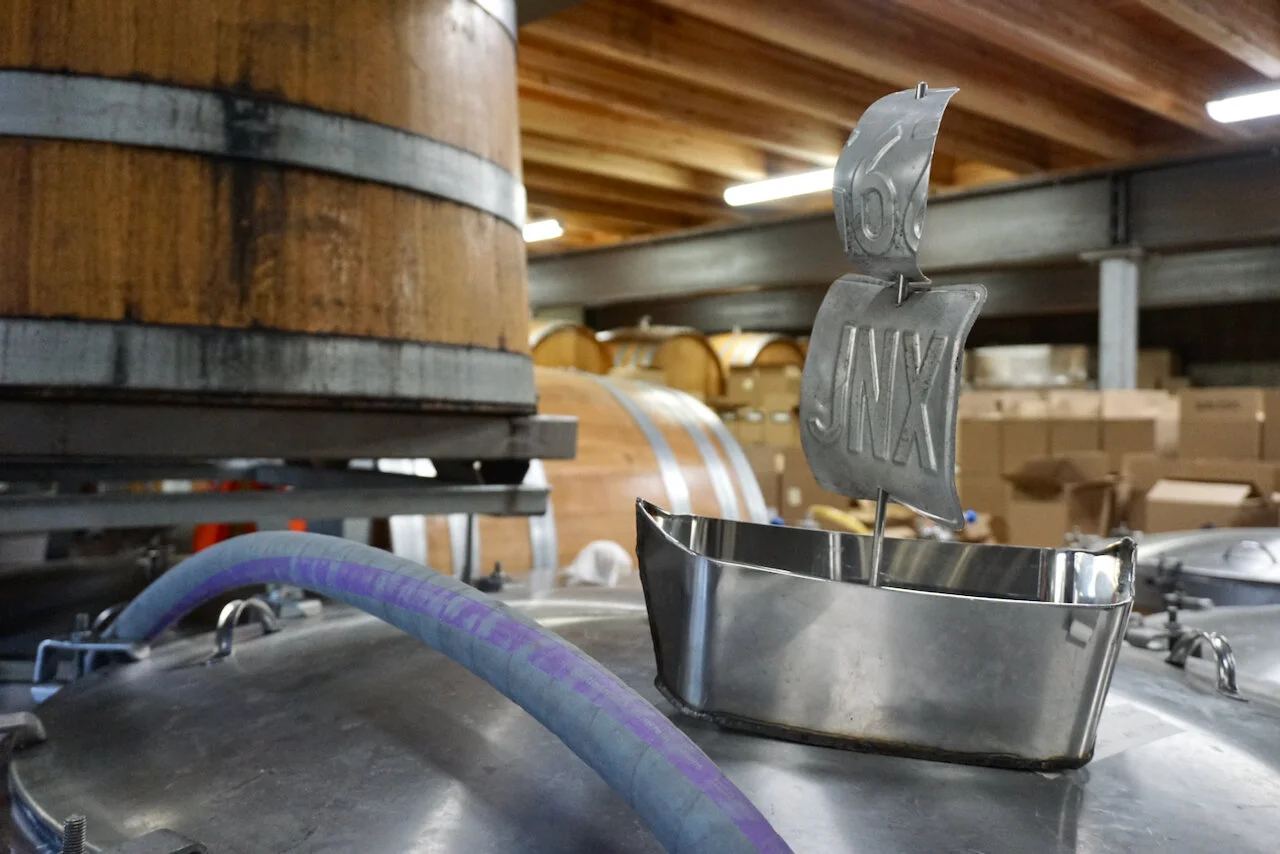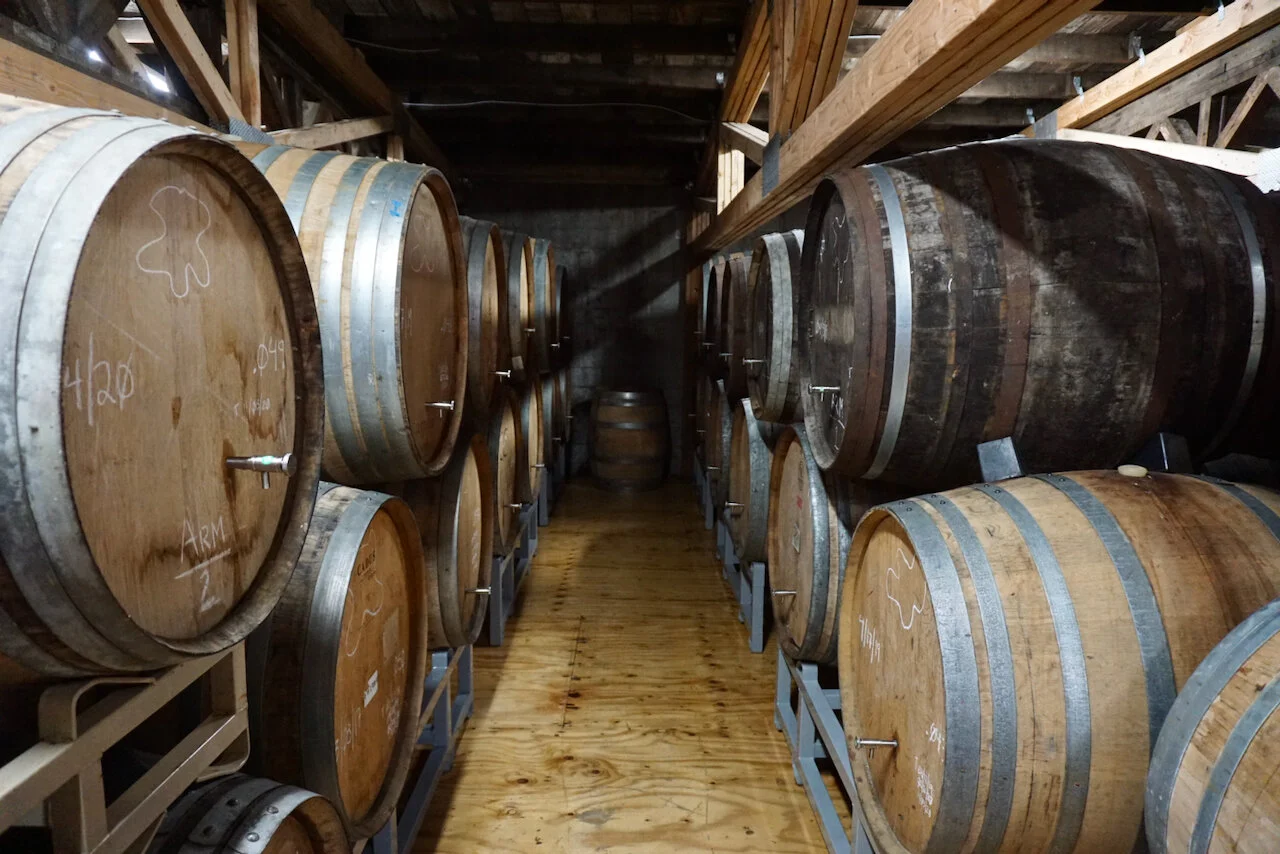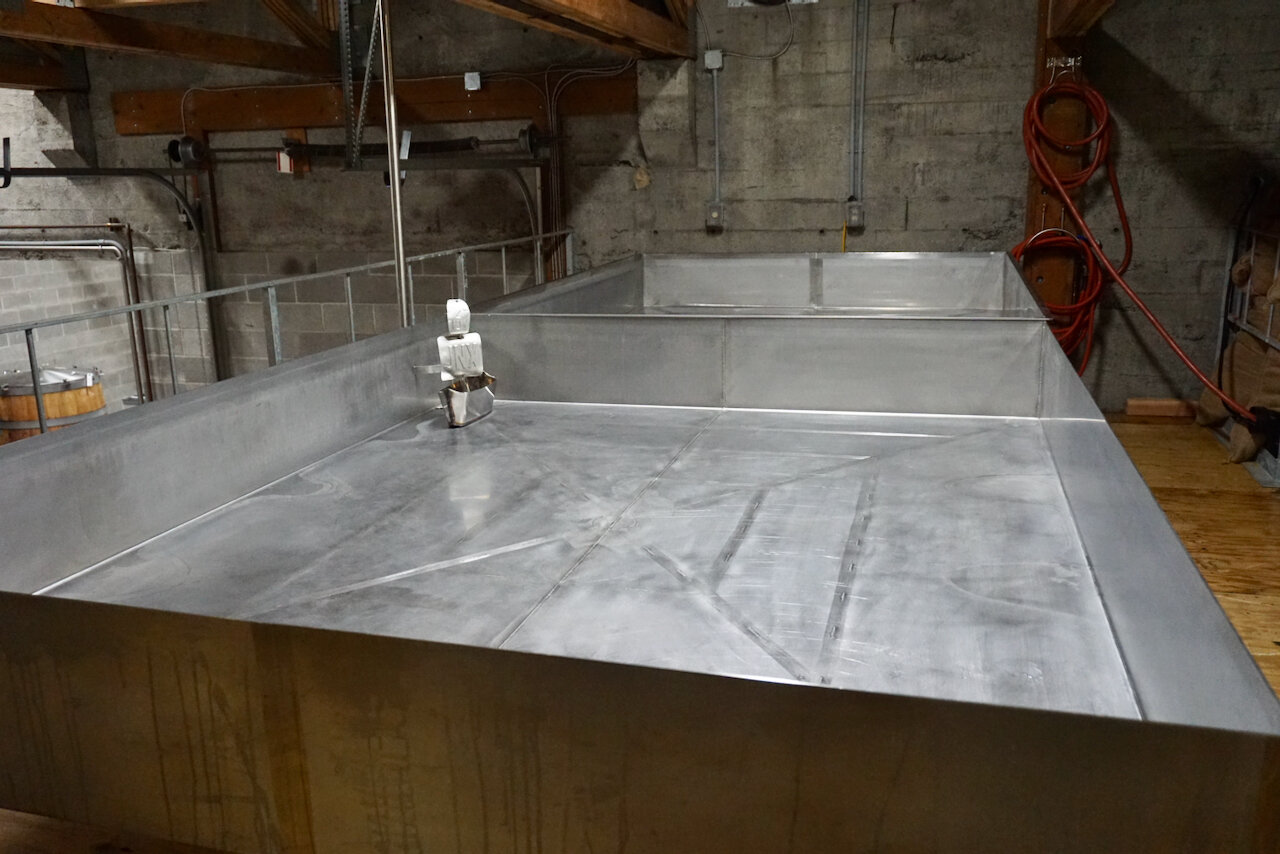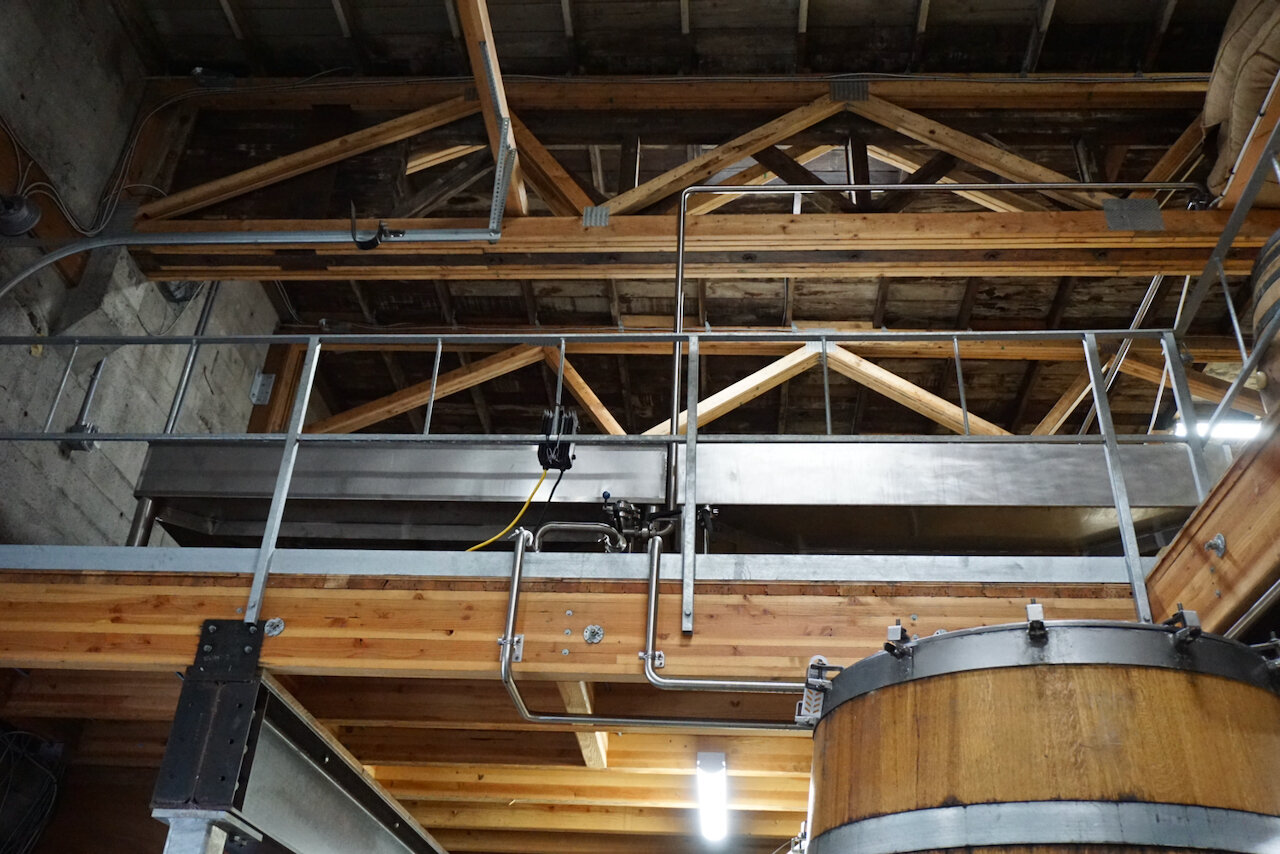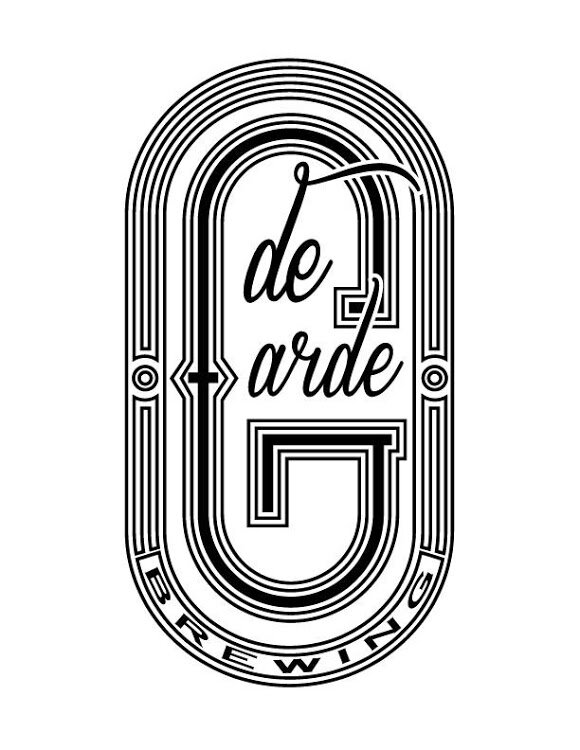De Garde Brewing sets sail on custom Cool-Ship
In a time when most breweries are struggling to stay afloat, De Garde Brewing is setting sail against the headwinds with a custom made ship that traverses their open air coolship like a rubber ducky dancing around a bathtub. De Garde Brewing was founded with spontaneous open fermentations in mind when Trevor and Linsey Rogers opened in Tillamook, Oregon in 2013. Who knew that their goals of harnessing the native fonta and flora of the rural pastures into world-class sour beers would culminate into a tiny stainless steel vessel dubbed the “SS Gravy Boat.” But during these stressful times, the coolship is not the only thing in the brewery that needs to blow off some steam.
Originally started as a nano scale commercial brewing operation, De Garde quickly found a following and expanded into an industrial space near the Tillamook Airport and Correctional Facility. The unlikely location served them well for the unusually large amount of cellar space required and the open air breeze required for these time intensive sour ales. In 2017 De Garde relocated to an older renovated auto shop space in the heart of town to build out a more approachable tasting room and two level production area. Brewing has moved up to on an over-sized 20bbl brewhouse that allows for the heavy loss of liquids due to evaporation during their 3+ hour boil times.
When considering their extremely niche segment of fruited and aged wild sour ales, De Garde’s output of around 1K barrels per year is impressive. Much of that production is tied up in oak, where all the beers spend time in casks, puncheons or foeders for months if not years on end. De Garde has capacity for 2,129 barrels of beer tied up in cellar conditioning, plus a growing collection of clay amphora vessels that could accommodate another 37 barrels of capacity. The diverse variety of wine grapes, fresh fruit, mushrooms and aged hops that are lovingly weaved into De Garde’s beers are packaged in 750ml corked bottles year-round, but brewing of fresh wort only takes place for 6 months out of the year.
Brew days only number around 60 per year and take place from the late fall through the spring when lower native temperatures assist in the coolship innoculated beers. A coolship is a large shallow open top vessel that Rogers compares to a baking pan, it’s a historical method of cooling boiling hot wort to yeast friendly temperatures before the advent of electrical chillers. It also classically serves as the primary method in making Lambic-style sours that are entirely dependent on the native wild yeasts and bacteria in the air to do the work of fermentation and contribute the categories signature acidity and barnyard flavors.
“We don't have nor use any outside or laboratory cultivated/cultured yeast or bacteria,” says Rogers, the bugs and bacteria in the air do all of the fermentation work.
At De Garde, the freshly boiled wort is pumped up to to the second floor rafters where the coolship sits in the wings below old wooden fafters. The roof and wooden support beams collect condensation and helps to develop a thriving ecosystem for native yeasts that feed on the sweet and starchy sugars of the unfermented wort. The thin shallow coolship allows the wort to chill at a faster rate that promotes fermentation and reduces harsher off-flavors and unpleasant levels of acetic acid. The lower ambient temperature of the season quickens the process and keeps some of the nastier elements of bacteria at bay. But even out in the cold open air, the unfermented wort takes 12+ hours to cool in the vessel before fermentation can begin in the next stage of the process.
“Everything is transferred to oak barrels and/or larger oak casks the following day, where it ferments and ages for at least one year, with the average age of any component being a bit over two years in barrel,” says Rogers. “We designed our brewery to brew in this manner, and lack the fundamental equipment to brew any other way.”
De Garde primarily brews four different base beers which are blended, aged, spiced, poked and prodded to achieve endless variations. When warranted, new custom recipes are designed for desired effect but the majority of beer starts as one of four lovingly named canvases on which they artfully paint their liquid creations.
'Cowspots': All of De Garde’s beers with 'The' at the start of the name come from this base beer, and it's the majority of what they brew. This recipe is the one most closely inspired by traditional Belgian Lambic, but is catered towards De Garde’s native yeast, bacteria, as well and regional ingredients. “It's meant to be a funky and singular representation of place,” says Rogers. The grist is made up of 42% unmalted/raw wheat and 58% pale barley, all regionally grown. Cowspots is hopped with 3-4+ year aged whole leaf Oregon grown Cascade and/or Willamette hops used in high volume during an extended boil, then fermented and aged in barrels for 1-6 years.
'Ivy' is De Garde’s most simple recipe, using 100% pale barley and aged local Cascade or Willamette hops. Like most of their base beers, an extended boil is utilized, and it's fermented and aged for two years in barrels after leaving leaving the coolship. “It's an exercise in complexity and expression of place coming from a notably simple recipe and process,” remarks Rogers.
'Premiere' is the most 'Saison' like base beer, fermented with the native yeast and bacteria in oak after spending the night in the coolship. This is a 98% pale malted barley, with 2% oats, all regionally grown. They hop this beer in the coolship not in the boil, with all northwest grown hops for flavor and aroma. Premiere is fermented and aged in barrels for a minimum of one year.
'BuVeaux' is similar to a smaller version of 'Cowspots,' but with a slightly shorter boil and maturation timeline. Fermented and aged a minimum of one year in barrels.
Through old world methods meet new world ingenuity, De Garde crafts painstakingly made rustic ales that go beyond the catch all descriptor of “Sour Beer” and strive for more complex flavors that defy any specific style. Anyone familiar with De Garde’s earlier beers has probably noticed the gradual shift from extreme sour to more complicated and balanced sophistication that takes more inspiration from food, wine and the coastal Oregon countryside.
While all of that sounds like something to sip from a wine glass with your pinky out, De Garde Brewing’s new cool - SHIP encapsulates the more freewheeling romantic spirit of the business. The SS Gravy Boat is a barely sea worthy stainless steel barge that if rocked too quickly would sink beneath the waves quicker than a blackout drunken sailor. But it was an admittedly drunken idea itself, while the Rogers were looking for distractions during the taxing initial COVID-19 shutdown last Spring.
Like many of us, local fabricator and friend of the brewery Mike Sump was light on work during the initial COVID shutdown, to keep him busy the Rogers asked him to make a coolship-ship from some leftover stainless steel fittings from De Garde’s oak tanks.
“He's a great guy, and very high quality work (besides making silly little boats for us). If anyone needs some work done, I'd be happy to put them in touch,” says Rogers of Sump’s more than capable work.
The heavy metallic SS Gravy Boat looks like something out of the classic Costner flick Waterworld but takes to floating more like something out of Mad Max. That is no surprise since the vessel is made of heavy leftover stainless steel fittings from an oak tank. The combination of shallow coolship waters and a less than buoyant metal means the SS Gravy Boat only achieves flotation only when the coolship reaches high tide. But when it does, the sight of a shiny medieval looking boat floating the choppy waters of steamy wort achieves it’s desired effect of bringing a childlike smile upon the face of a brewer during the most difficult days of the pandemic.
And with any luck, and at our urging, De Garde and Sump will go back into the workshop for future cool-ship iterations that will set sail with increasingly absurd names. What are the chances of that happening?
“It’s higher than zero percent,” says Rogers. “That’s something we will have to run by my wife Linsey who usually shoots down my bad ideas, and this might.. might get lumped in with the other bad ideas.”


